Dong Gao
Classification of hazard event via language fractal
Sep 12, 2022
Abstract:HAZOP is a safety paradigm undertaken to reveal hazards in industry, its report covers valuable hazard events (HaE). The research on HaE classification has much irreplaceable pragmatic values. However, no study has paid such attention to this topic. In this paper, we present a novel deep learning model termed DLF to explore the HaE classification through fractal method from the perspective of language. The motivation is that (1): HaE can be naturally regarded as a kind of time series; (2): the meaning of HaE is driven by word arrangement. Specifically, first we employ BERT to vectorize HaE. Then, we propose a new multifractal method termed HmF-DFA to calculate HaE fractal series by analyzing the HaE vector who is regarded as a time series. Finally, we design a new hierarchical gating neural network (HGNN) to process the HaE fractal series to accomplish the classification of HaE. We take 18 processes for case study. We launch the experiment on the basis of their HAZOP reports. Experimental results demonstrate that our DLF classifier is satisfactory and promising, the proposed HmF-DFA and HGNN are effective, and the introduction of language fractal into HaE is feasible. Our HaE classification system can serve HAZOP and bring application incentives to experts, engineers, employees, and other enterprises, which is conducive to the intelligent development of industrial safety. We hope our research can contribute added support to the daily practice in industrial safety and fractal theory.
Yes, DLGM! A novel hierarchical model for hazard classification
Sep 10, 2022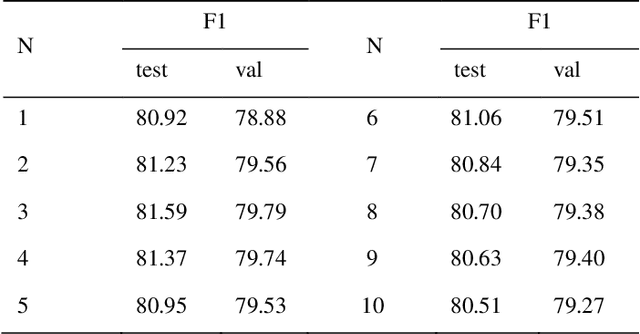
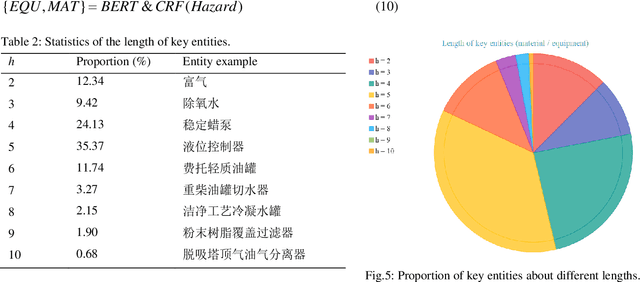

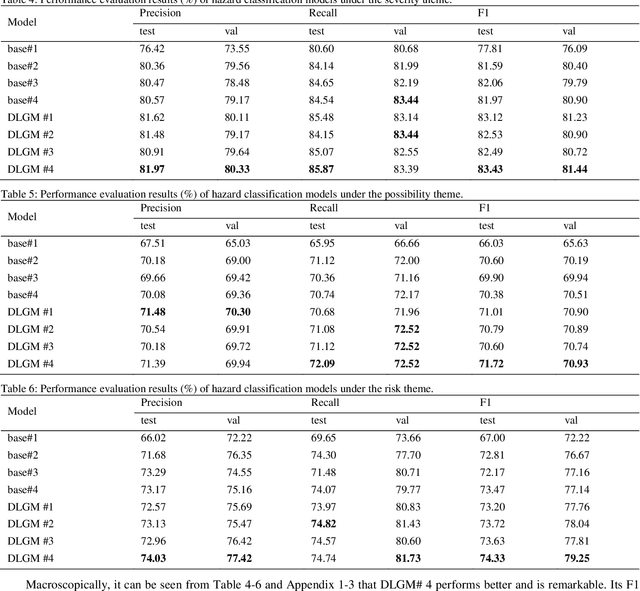
Abstract:Hazards can be exposed by HAZOP as text information, and studying their classification is of great significance to the development of industrial informatics, which is conducive to safety early warning, decision support, policy evaluation, etc. However, there is no research on this important field at present. In this paper, we propose a novel model termed DLGM via deep learning for hazard classification. Specifically, first, we leverage BERT to vectorize the hazard and treat it as a type of time series (HTS). Secondly, we build a grey model FSGM(1, 1) to model it, and get the grey guidance in the sense of the structural parameters. Finally, we design a hierarchical-feature fusion neural network (HFFNN) to investigate the HTS with grey guidance (HTSGG) from three themes, where, HFFNN is a hierarchical structure with four types of modules: two feature encoders, a gating mechanism, and a deepening mechanism. We take 18 industrial processes as application cases and launch a series of experiments. The experimental results prove that DLGM has promising aptitudes for hazard classification and that FSGM(1, 1) and HFFNN are effective. We hope our research can contribute added value and support to the daily practice in industrial safety.
Exploring industrial safety knowledge via Zipf law
May 25, 2022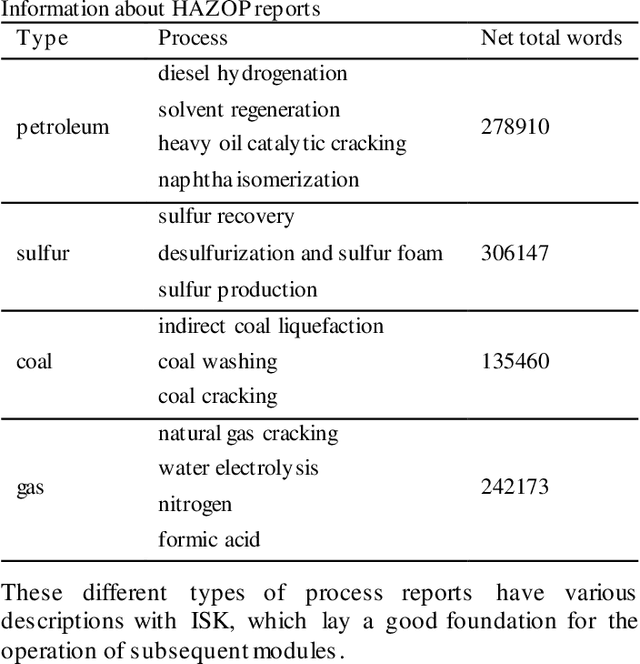
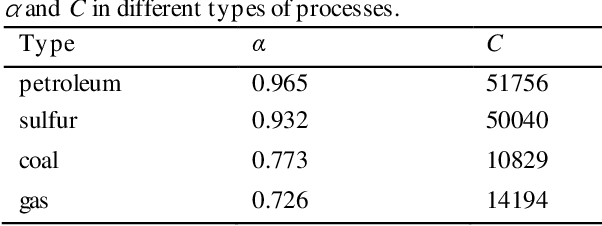
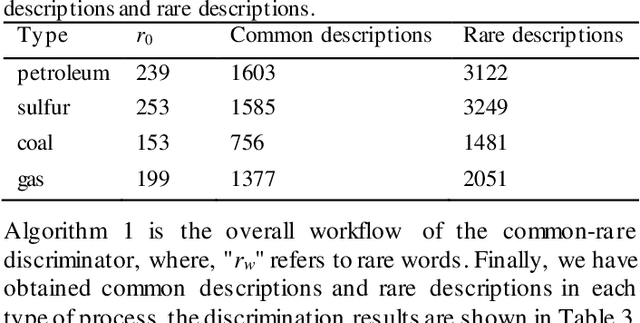
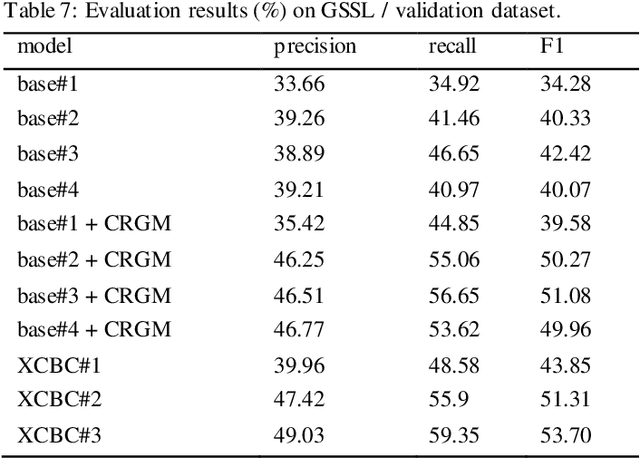
Abstract:The hazard and operability analysis (HAZOP) report contains precious industrial safety knowledge (ISK) with expert experience and process nature, which is of great significance to the development of industrial intelligence. Subject to the attributes of ISK, existing researches mine them through sequence labeling in deep learning. Yet, there are two thorny issues: (1) Uneven distribution of ISK and (2) Consistent importance of ISK: for safety review. In this study, we propose a novel generative mining strategy called CRGM to explore ISK. Inspired Zipf law in linguistics, CRGM consists of common-rare discriminator, induction-extension generator and ISK extractor. Firstly, the common-rare discriminator divides HAZOP descriptions into common words and rare words, and obtains the common description and the rare description, where the latter contains more industrial substances. Then, they are operated by the induction-extension generator in the way of deep text generation, the common description is induced and the rare description is extended, the material knowledge and the equipment knowledge can be enriched. Finally, the ISK extractor processes the material knowledge and equipment knowledge from the generated description through the rule template method, the additional ISK is regarded as the supplement of the training set to train the proposed sequence labeling model. We conduct multiple evaluation experiments on two industrial safety datasets. The results show that CRGM has promising and gratifying aptitudes, greatly improves the performance of the model, and is efficient and generalized. Our sequence labeling model also shows the expected performance, which is better than the existing research. Our research provides a new perspective for exploring ISK, we hope it can contribute support for the intelligent progress of industrial safety.
A novel knowledge graph development for industry design: A case study on indirect coal liquefaction process
Dec 17, 2021
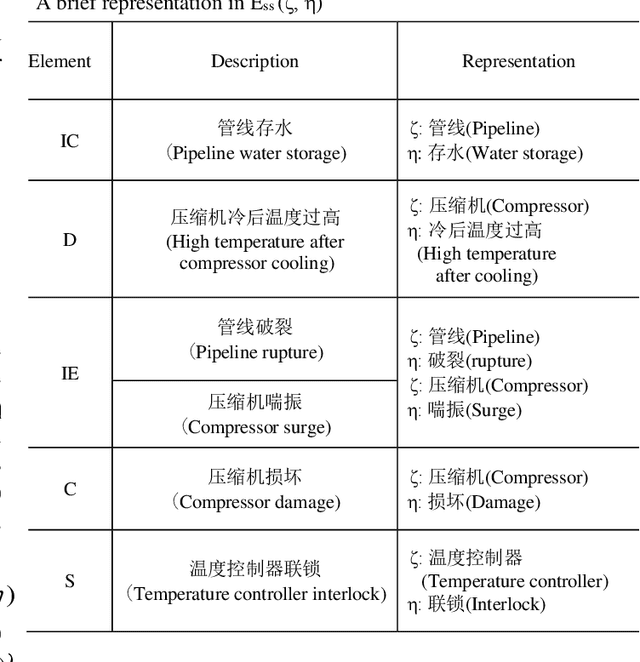


Abstract:Hazard and operability analysis (HAZOP) is a remarkable representative in industrial safety engineering. However, a great storehouse of industrial safety knowledge (ISK) in HAZOP reports has not been thoroughly exploited. In order to reuse and unlock the value of ISK and optimize HAZOP, we have developed a novel knowledge graph for industrial safety (ISKG) with HAZOP as the carrier through bridging data science (DS) and engineering design (ED). Specifically, firstly, considering that the knowledge contained in HAZOP reports of different processes in industry is not the same, we have creatively developed a general ISK standardization framework (ISKSF), ISKSF provides a practical scheme for the standardization of HAZOP reports in various processes and the unified representation of different types of ISK, which realizes the integration and circulation of ISK. Secondly, we conceive a novel and reliable information extraction model (HAINEX) based on deep learning combined with DS. HAINEX can effectively mine ISK from HAZOP reports, which alleviates the obstacle of ISK extraction caused by the particularity of HAZOP text. Finally, we build ISK triples based on ISKSF and HAINEX and store them in the Neo4j graph database. We take indirect coal liquefaction process as a case study to develop ISKG, and its oriented applications can optimize HAZOP and mine the potential of ISK, which is of great significance to improve the security of the system and enhance prevention awareness for people. ISKG containing ISKSF and HAINEX sets an example of the interaction between DS and ED for industrial safety, which can enlighten other researchers committed to DS for ED and extend the perspectives of industrial safety.
AIS: A nonlinear activation function for industrial safety engineering
Nov 27, 2021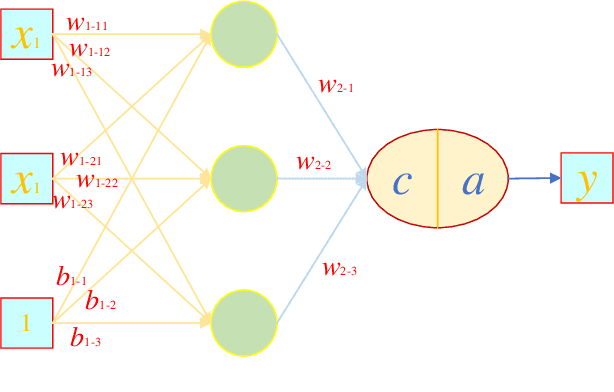


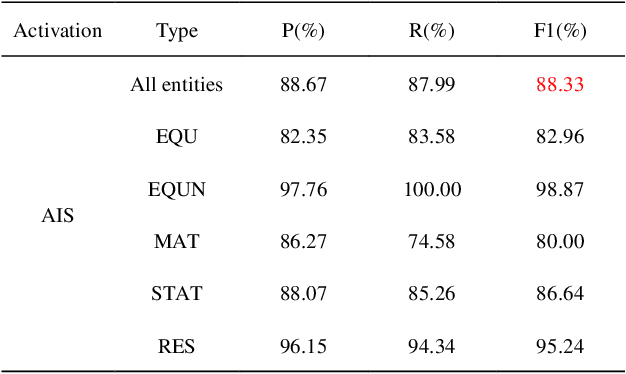
Abstract:In the task of Chinese named entity recognition based on deep learning, activation function plays an irreplaceable role, it introduces nonlinear characteristics into neural network, so that the fitted model can be applied to various tasks. However, the information density of industrial safety analysis text is relatively high, and the correlation and similarity between the information are large, which is easy to cause the problem of high deviation and high standard deviation of the model, no specific activation function has been designed in previous studies, and the traditional activation function has the problems of gradient vanishing and negative region, which also lead to the recognition accuracy of the model can not be further improved. To solve these problems, a novel activation function AIS is proposed in this paper. AIS is an activation function applied in industrial safety engineering, which is composed of two piecewise nonlinear functions. In the positive region, the structure combining exponential function and quadratic function is used to alleviate the problem of deviation and standard deviation, and the linear function is added to modify it, which makes the whole activation function smoother and overcomes the problem of gradient vanishing. In the negative region, the cubic function structure is used to solve the negative region problem and accelerate the convergence of the model. Based on the deep learning model of BERT-BiLSTM-CRF, the performance of AIS is evaluated. The results show that, compared with other activation functions, AIS overcomes the problems of gradient vanishing and negative region, reduces the deviation of the model, speeds up the model fitting, and improves the extraction ability of the model for industrial entities.
Why MDAC? A Multi-domain Activation Function
Nov 27, 2021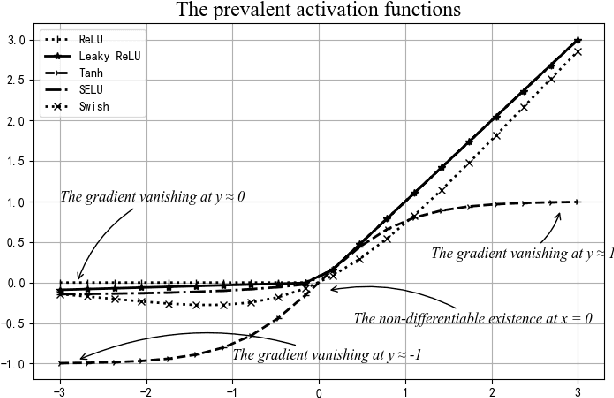


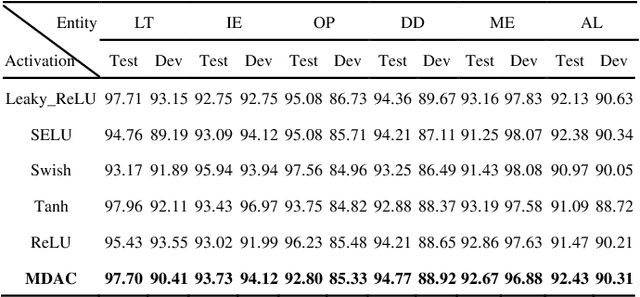
Abstract:In this study, a novel, general and ingenious activation function termed MDAC is proposed to surmount the troubles of gradient vanishing and non-differentiable existence. MDAC approximately inherits the properties of exponential activation function (such as Tanh family) and piecewise linear activation function (such as ReLU family). Specifically, in the positive region, the adaptive linear structure is designed to respond to various domain distributions. In the negative region, the combination of exponent and linearity is considered to conquer the obstacle of gradient vanishing. Furthermore, the non-differentiable existence is eliminated by smooth approximation. Experiments show that MDAC improves performance on both classical models and pre-training optimization models in six domain datasets by simply changing the activation function, which indicates MDAC's effectiveness and pro-gressiveness. MDAC is superior to other prevalent activation functions in robustness and generalization, and can reflect excellent activation performance in multiple domains.
 Add to Chrome
Add to Chrome Add to Firefox
Add to Firefox Add to Edge
Add to Edge